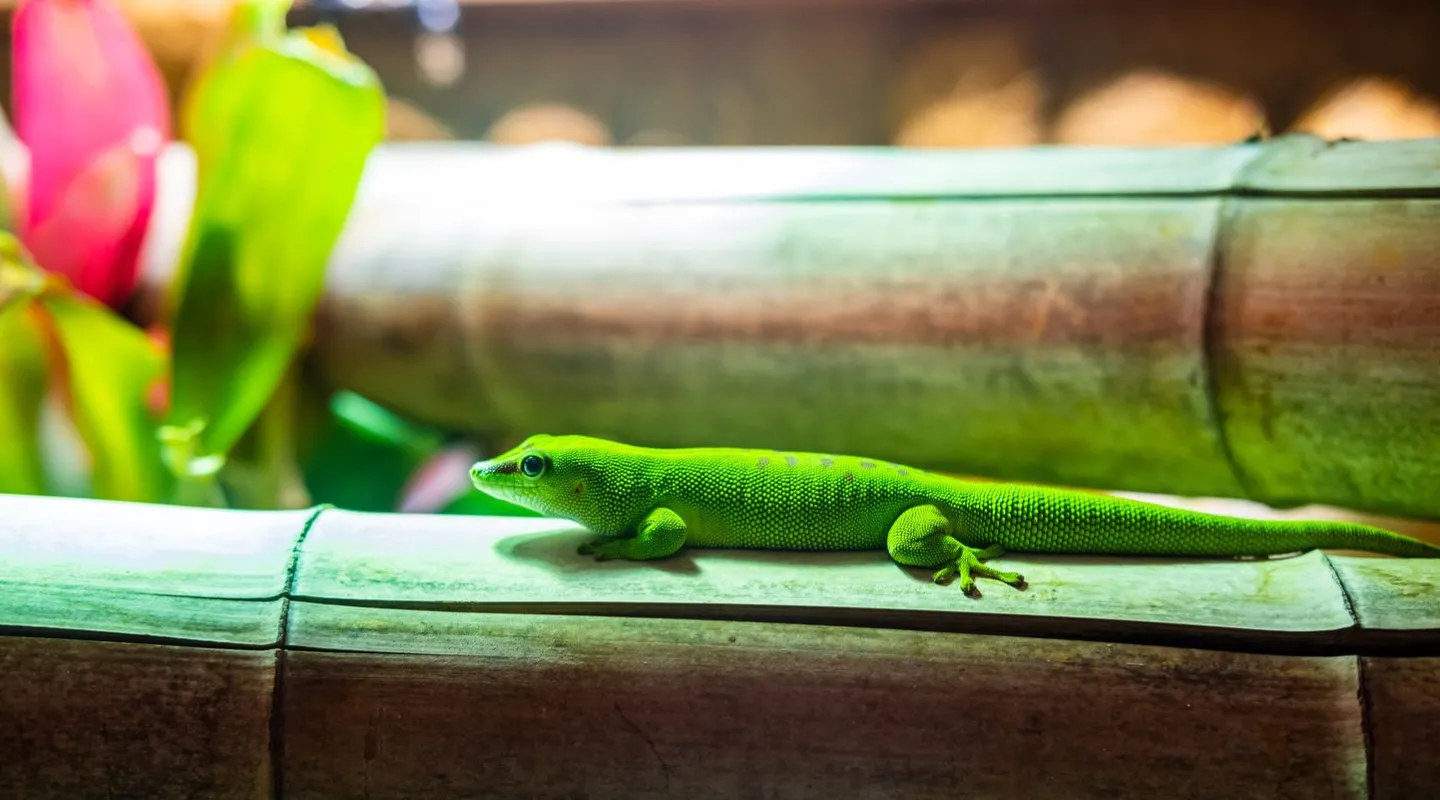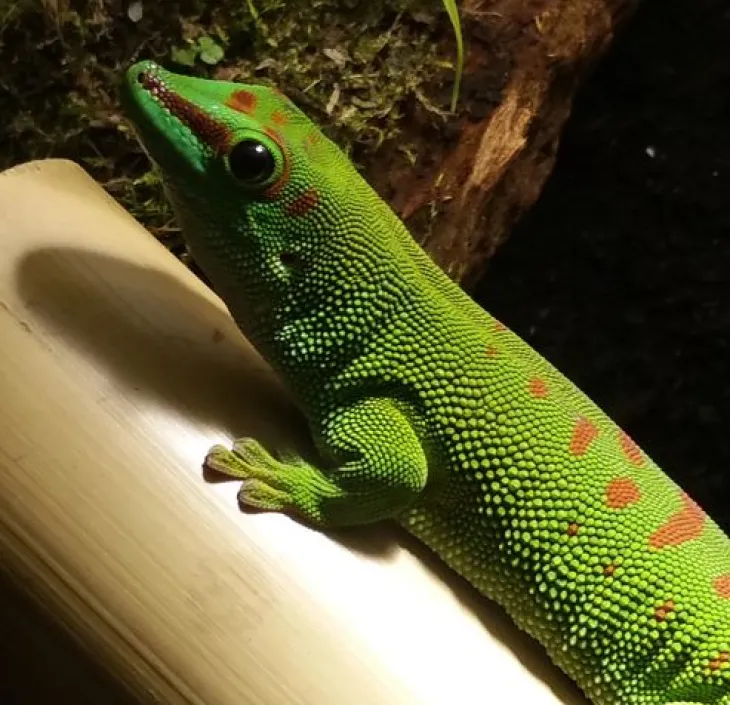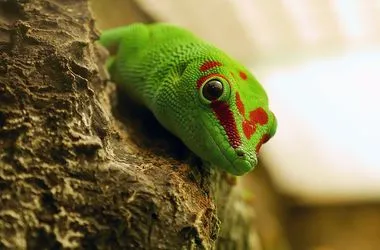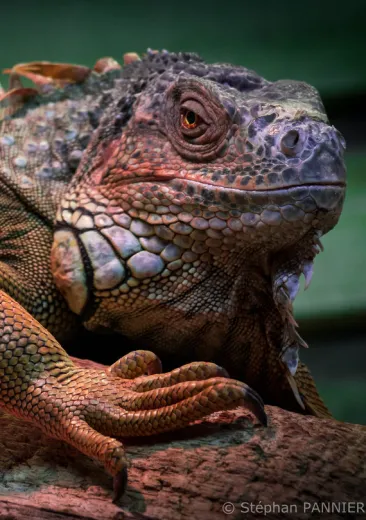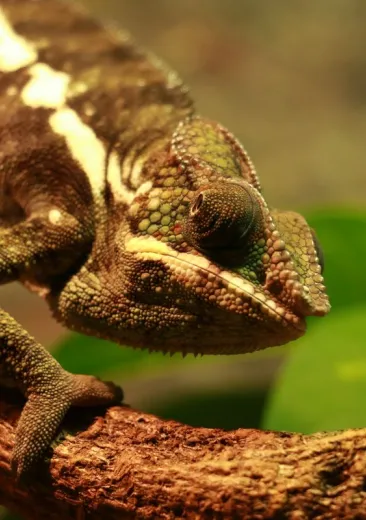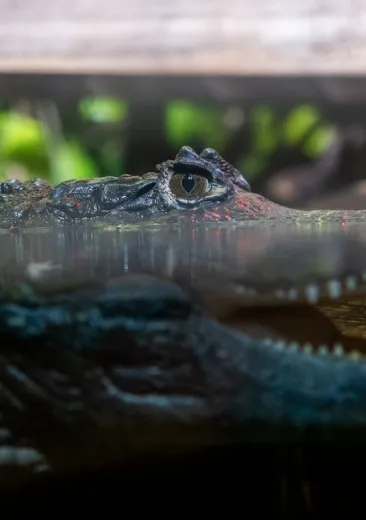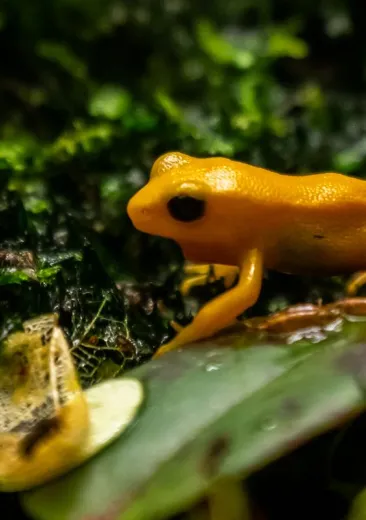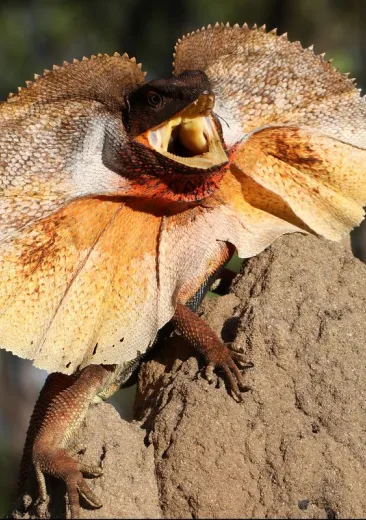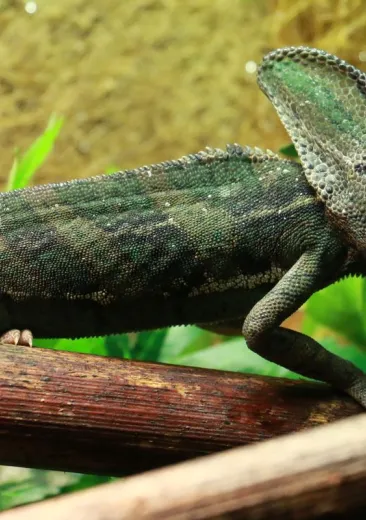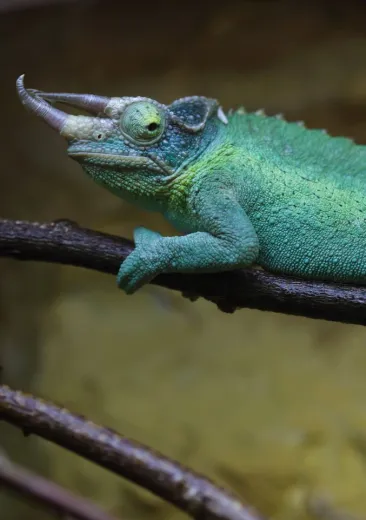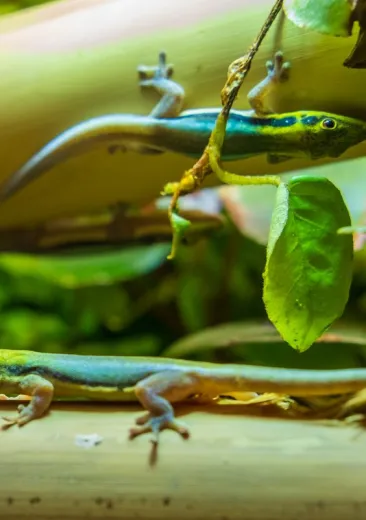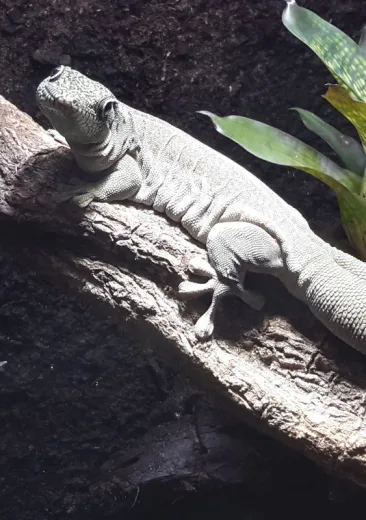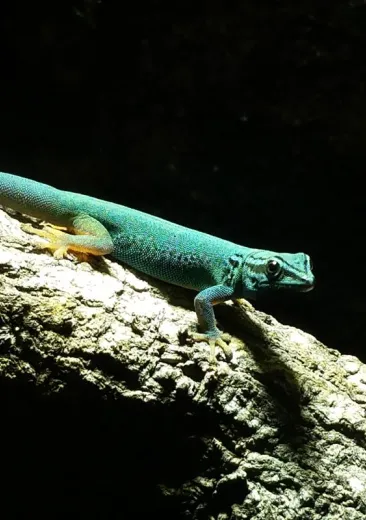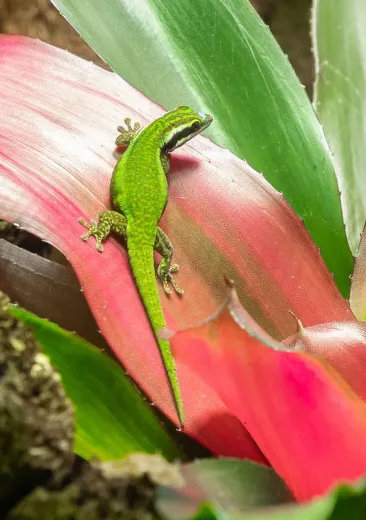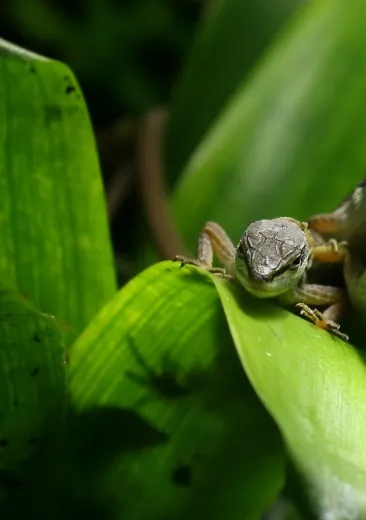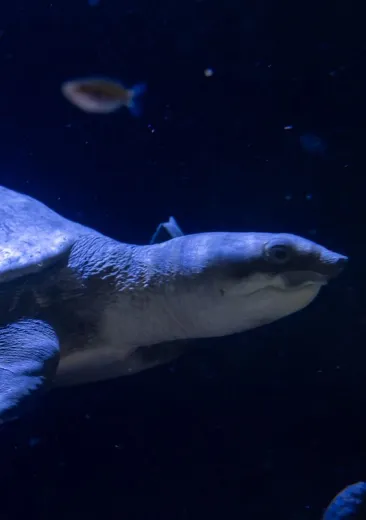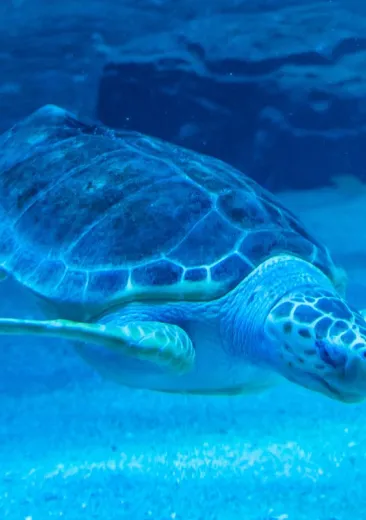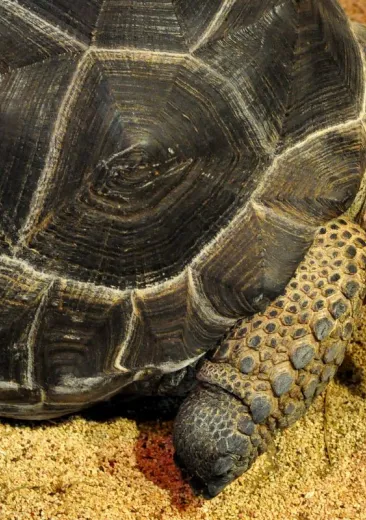Biomimicry: the adhesive strips on the underside of the geckos' legs inspired the development of gecskin, a material used to attach objects to walls.
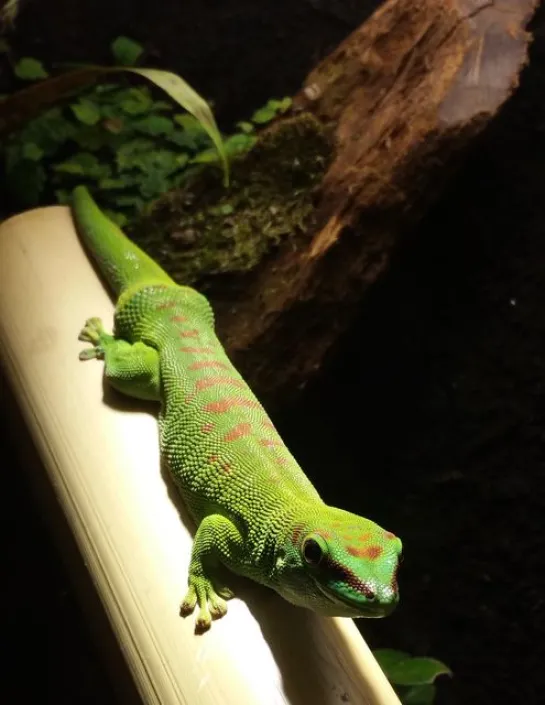
Identity card
Madagascar Day Gecko
- Scientific name:
- Phelsuma madagascariensis
- Family:
- Geckonidae
- Class:
- Reptilia
- Phylum:
- Chordata
- Year of description:
- Gray, 1831
- IUCN Status:
- Least Concern
- CITES-status:
Appendix II
- Distribution:
-
Northern Madagascar and Nosy Be Island, between 0 and 900 m altitude.
- Habitat:
-
This gecko lives in the rainforest.
- Size:
It measures between 22 and 30 cm, with the male being larger than the female.
- Diet:
-
Insects, fruits, pollen as well as other lizards that are smaller than it.
